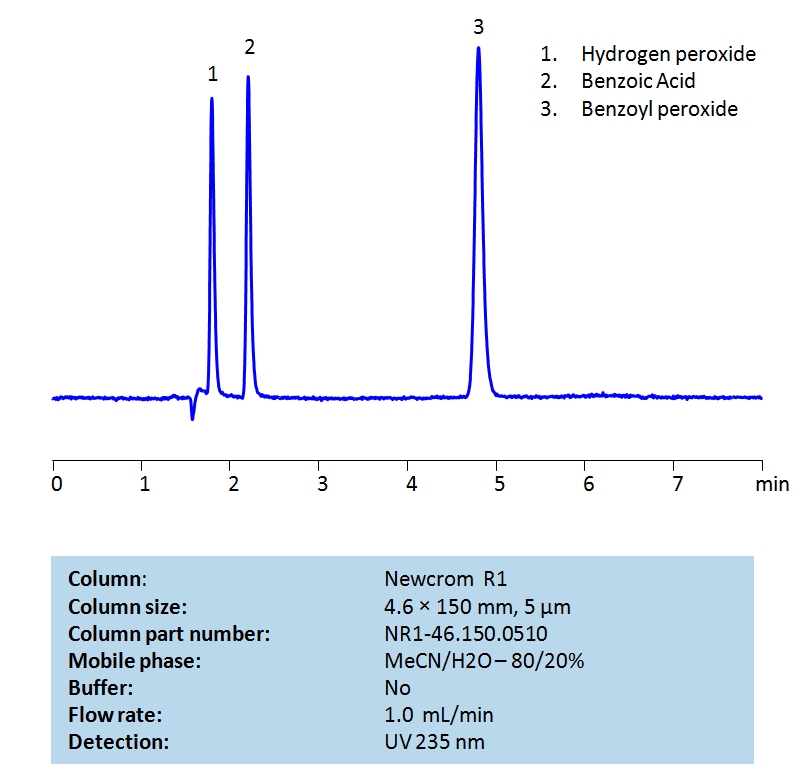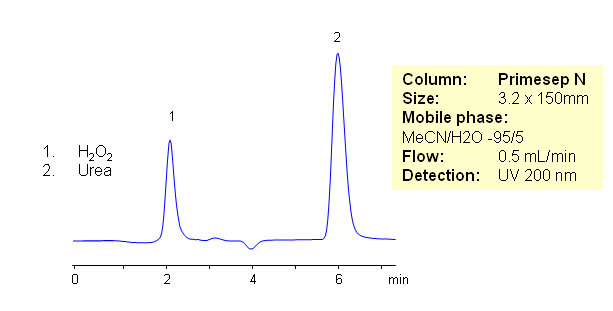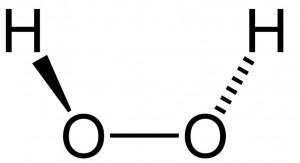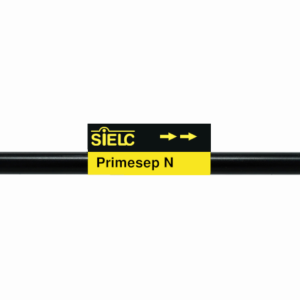| CAS Number | 7722-84-1 |
|---|---|
| Molecular Formula | H2O2 |
| Molecular Weight | 34.014 |
| InChI Key | MHAJPDPJQMAIIY-UHFFFAOYSA-N |
| LogP | -1.57 |
| Synonyms |
|
Applications:
HPLC Determination of Benzoyl Peroxide on Newcrom R1 Column
July 19, 2021
Separation type: Liquid Chromatography Reverse Phase.

High Performance Liquid Chromatography (HPLC) Method for Analysis of Benzoyl peroxide.
Benzoyl peroxide is a commonly used topical treatment for mild acne medications because of its antibacterial, anti keratolytic, and comedolytic actions. It is converted to benzoic acid in the skin and primarily targets the pilosebaceous units. Benzoyl Peroxide can be retained in HPLC on Newcrom R1 reverse-phase column with the simple isocratic mobile phase consisting of acetonitrile (MeCN) and water. The analysis method can be UV detected at 260 nm.
| Column | Newcrom R1, 4.6×150 mm, 5 µm, 100A |
| Mobile Phase | MeCN – 80% |
| Buffer | No |
| Flow Rate | 1.0 ml/min |
| Detection | 235 nm |
| Class of Compounds | Hydrophobic |
| Analyzing Compounds | Benzoyl peroxide, Benzoic Acid, Hydrogen peroxide |
Application Column
Newcrom R1
The Newcrom columns are a family of reverse-phase-based columns. Newcrom A, AH, B, and BH are all mixed-mode columns with either positive or negative ion-pairing groups attached to either short (25 Å) or long (100 Å) ligand chains. Newcrom R1 is a special reverse-phase column with low silanol activity.
Select optionsHydrogen Peroxide

HPLC Method for Separation of Urea and Hydrogen Peroxide
July 16, 2009

Urea and carbamide are separated by HILIC HPLC on Primesep N column. Both compounds can be monitored at low UV – 200 nm. Method can be used for determination and quantitation of hydrogen peroxide and urea in various matrices.
Application Column
Primesep N
Column Diameter: 3.2 mm
Column Length: 150 mm
Particle Size: 5 µm
Pore Size: 100 A
Urea




